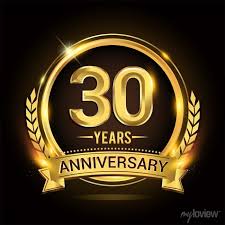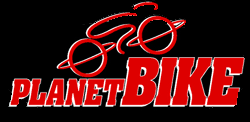Bike Maintenance
General Maintenance
| On-pavement riding - average riding 10-30 miles | ||||||
|
|
|
every ride |
10 rides |
50 rides |
100 rides |
200 rides |
|
Checkup |
Inspect tire pressure |
X |
|
|
|
|
|
Inspect wheel true |
|
X |
|
|
|
|
|
Inspect nuts & bolts |
|
X |
|
|
|
|
|
Inspect & tighten cranks |
|
X |
|
|
|
|
|
Inspect chain stretch |
|
|
X |
|
|
|
|
Inspect wear of chainrings |
|
|
X |
|
|
|
|
Cleaning |
Lube & clean chain |
X |
|
|
|
|
|
Degrease drivetrain |
|
X |
|
|
|
|
|
Lube cables - brakes & gears |
|
X |
|
|
|
|
|
Clean & wash bicycle |
|
X |
|
|
|
|
|
Grease nuts & bolts |
|
|
X |
|
|
|
|
Grease bearings |
|
|
|
|
X |
|
|
Replacement |
Replace cables & housing |
|
|
X |
|
|
|
Replace chain* |
|
|
X |
|
|
|
|
Replace cassette* |
|
|
|
X |
|
|
|
Replace chainrings* |
|
|
|
X |
|
|
|
Replace tires |
|
|
X |
|
|
|
|
Replace bottom bracket |
|
|
|
|
X |
|
|
Replace grips / bar tape |
|
|
X |
|
|
|
| * Replacement of drivetrain will be sooner if regular lubing & cleaning is not maintained | ||||||
Maintenance Explained
Checkup
- Inspect tire pressure - Even a loss of 5 psi on your tires will slow you down considerably and increase your chances of flats. Road riding requires 100 psi - 130 psi for most riders, although racers sometimes ride up to 160 psi (with tires rated that high!)
- Inspect wheel true - Wheels get out of true when spokes settle or if you bend the rim with an impact. Check for trueness of wheels often, because a wheel left out of true will permanently set a bent rim and put undue tension on the spokes. To inspect the trueness, gauge how much space between your brake pads and the rim - if it varies while spinning the wheel then it needs truing.
- Inspect nuts & bolts - Your nuts & bolts will get loose over time - if this occurs it may damage your parts and worse yet cause injury. Make sure to have allen wrenches & socket wrenches 8, 9, 10 mm. Torque your nuts & bolts about ½ to 1 full turn past hand tight.
- Inspect & tighten cranks - Cranks do get loose most often - makes sense considering how many times it turns when you ride. Torque your cranks as tight as you can every few rides.
- Inspect chain stretch - Your chain doesn't actually stretch - the bushings between your links compress. This makes your drivetrain not function as it should, and will cause gear skipping and premature wear on your cassette and chainrings. Come by our shop & we can quickly gauge your stretch with our tool. You should replace your chain if it reads beyond 0.5 mm.
- Inspect wear of chainrings - Worn chainrings will slow down your shifting because the special shift-ramps lose their effectiveness. You'll know if they're worn if they are sharp and pointy to the touch. By the way, a new chainring intentionally has different shapes to the teeth (some look worn and dull) - this helps ramp the chain quicker.
Cleaning
- Lube & clean chain - A bicycle drivetrain (chain, rear cogs, front cogs) is a metal-on-metal system. This puts a lot of wear and friction on all your parts. Therefore, regular lubing will reduce the friction, resulting in longer wear on your drivetrain parts and a smoother, quieter ride. Bicycle-specific lube is different from automotive or general lube.
- Dry lube is extremely thin to prevent dirt from collecting on the chain. But it's Teflon coated to help stay on the chain. This is perfect for off-road riding.
- Wet lube is thicker (but still much thinner than regular lube) to last longer and repel rain. This is ideal for street riding where dust is less an issue.
- Wax lubes are great because they create a coating on your chain, thus eliminating friction on your drivetrain. However, it's only ideal on newer drivetrains and must be cleaned regularly (to prevent over-coating).
- The best is Pro Link. It is super thin to prevent dust and build-up, but has imbedded chemicals that help stick to metal and reduce friction. It's also great for your brake & gear wires.
- Dry lube is extremely thin to prevent dirt from collecting on the chain. But it's Teflon coated to help stay on the chain. This is perfect for off-road riding.
Here's the steps to lubing & cleaning your chain:
-
- Pedal backwards and clean out the dirty lube and gunk with a rag.
- Pedal backwards and place a drop in each link.
- Wait five minutes, and with a clean rag wipe off the excess.
- Pedal backwards and clean out the dirty lube and gunk with a rag.
- Degrease drivetrain - Every few rides you'll have to clean out your drivetrain to remove the grime and dirt that gets picked up from regular lubing. Make sure to use bicycle-specific degreaser - it won't crack your rubber seals and is safe for the environment. Here's the steps to degreasing your drivetrain:
-
- Spray degreaser on your chain, chainrings, cassette, and rear derailleur pulleys. Wait five to ten minutes to penetrate.
- Use a wire brush to clean out gunk inside your chain and cassette. Use a flat-tip screwdriver and clean out the crud that collects on your pulleys.
- Wash the entire drivetrain with water. Do not use a high-pressure hose.
- Dry out your drivetrain with a rag and wait overnight (because water will be stuck inside your chain).
- Re-lube your chain.
- Spray degreaser on your chain, chainrings, cassette, and rear derailleur pulleys. Wait five to ten minutes to penetrate.
- Lube cables - Your cables are the veins of your bicycle and need to be clean and lubed to function optimally. Drop a bit of lube wherever there's a bend in your cables and where it meets housing. How do you do that? For brakes, release the cables as if you're removing your wheels. For derailleurs, get into the large sprockets; then without pedaling shift into the smaller sprockets.
- Clean & wash bicycle - Regular cleaning will retain your clear coat and prevent your bearings from getting contaminated. Use regular soap and water and brushes - be sure not to use a high-pressure hose though as it will get inside your bearings. For a glossier look use Pedro's Bike Lust for your frame's clear coat.
- Grease nuts & bolts - Every year or so you should loosen and re-grease your bolts to prevent them from seizing. Just a dab on the threads will do.
- Grease bearings - Every five years or so you will need to overhaul your bearings inside your wheels & headset (your bottom bracket is a sealed system and should be replaced entirely). If you have sealed bearings, you should replace the bearings themselves.
Replacement
- Replace cables & housing - Over time your cables and housing will get so gritty they should be replaced. It's only twenty bucks or so for new housing and wires, but it is the best way to improve your shifting and braking performance. Be sure to request stainless cables to prevent rust. Teflon-coated cables add smoothness, but need to be replaced more often because the coating will wear off.
- Replace chain - A drivetrain is a mini gear system, just like your car's transmission; the teeth in the gears are precisely measured to fit. When your chain stretches, it throws off your gears and will result in sluggish performance. Over time it will cause ghost-shifting and gear skipping. Be sure to replace your chain when it's worn (past 0.5 mm) and you'll make your cassette and chainrings last longer.
- Replace cassette / chainrings - Your cassette and chainrings will wear out over time, resulting in sluggish performance. To prevent premature wear, be sure to regularly lube and clean your chain. Replace your chain also when it's stretched out. You'll know they're worn if the teeth are sharp and pointy to the touch.
- Replace tires - A fifteen percent loss in tire tread will reduce your performance by forty percent. Your treads will not be able to dig into the dirt, causing you to lose traction on climbs. You won't be as stable on turns. You will flat easier. You'll slip easier on wet & oil spots.
- Replace bottom bracket - A worn bottom bracket will cause friction and slow you down every time you pedal. Luckily, a good bottom bracket will last for years. For an easy test, pedal backwards as hard as you can with your arm. If it can't rotate a couple times, chances are your bottom bracket is shot.
- Replace grips / bar tape - Besides being sticky and grimy, worn grips will decrease your overall control of your bicycle - not only on grip itself, but will spin on your bars. Change them every so often.

